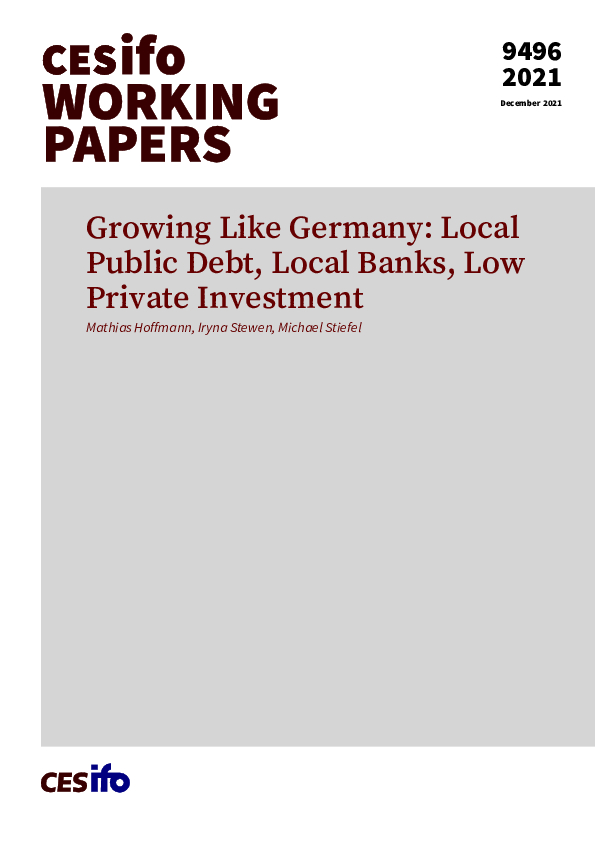Growing Like Germany: Local Public Debt, Local Bank, Low Private Investment
CESifo, Munich, 2021
CESifo Working Paper No. 9496

Using a firm-bank panel of more than 1m German firms over 2010-2016, we document that local public bank lending to municipalities crowds out private investment. Our results show how crowding out can happen in a developed economy characterized by low interest rates and fiscal austerity. Our mechanism relies on two structural features of Germany’s banking landscape: First, the geographical segmentation of credit markets for small and medium firms (SME) which are dominated by local banks. Second, a special statutory mandate requiring local public banks to lend to municipalities. With yields on local government debt declining to all-time lows, local public banks tried to alleviate stress on their balance sheets by using their local market power to charge higher rates on their SME customers. This crowded out firm investment. Perversely, fiscal consolidation at the state and federal levels contributed to this effect by putting pressure on the budgets of municipal governments which increasingly borrowed from local public banks. Crowding out lowered aggregate private investment by around 30-40 bio euros per year (or 1 percent of GDP). Thus, we identify a novel channel through which low interest rates can adversely affect bank lending and firm performance. Our results also illustrate how segmented credit markets can amplify negative multiplier effects from fiscal austerity.
Public Finance
Monetary Policy and International Finance